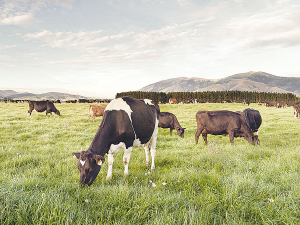Pasture management made easy
Those looking to use direct seeding to repair grass paddocks or plant catch crops might want to take a closer look at the recently introduced Erth Engineering Agriseeder.
 Farmers who utilise a high percentage of the pasture they grow on farm will make more profit from those farmers that lose pasture quality during parts of the season, especially over the summer.
Farmers who utilise a high percentage of the pasture they grow on farm will make more profit from those farmers that lose pasture quality during parts of the season, especially over the summer.
OPINION: As we know from research done here in New Zealand and overseas, pasture management and quality have a strong correlation with profitability.
Farmers that manage to utilise a high percentage of the pasture they grow on farm, and maintain pasture quality to the best possible level over the whole season, will make more profit than those farmers that lose pasture quality during parts of the season, especially over the summer.
The initial loss of pasture quality in New Zealand occurs just before summer when grass species want to change to the reproductive stage. Even the best pasture managers cannot avoid this from happening due to the physiological result of increasing soil temperatures and hot weather that trigger different pasture species to go from the vegetative stage to the reproductive stage.
Research shows that metabolisable energy (ME) in pasture can drop from 11.5 - 12.5 ME/kgDM in spring to 9.5 - 10.5 ME/kgDM over the summer period and even lower if it is under severe dry conditions.
It is not just the ME value that changes: neutral detergent fibre (NDF) in the same pasture can increase from 35-45 %DM in spring to 42-55 %DM in summer, reducing the total DM intake of pasture in dairy cows.
Another pasture component that drops significantly during summer is the crude protein (CP). Universal values in spring for pasture in New Zealand are 20-30 %CP/kgDM, but in summer this can drop to 9-14 %CP/kgDM in dry conditions which we are experiencing more and more often each season.
This decrease in quality and volume of pasture consumption can reduce milk production significantly if left unattended.
As farmers, we need to estimate when this change in the pasture will happen to adapt our herds’ diet accordingly. Some of the indicators we can use to know when the plants are starting to have this change in quality are the presence of seed head and the drop in milk production when the cows are fully feed.
Although there are seasonal changes every year, farmers should know when this is about to happen on their farm and make the decision early enough to avoid the drop in milk production by adding high energy (ME), high protein (rumen degradable protein) and low NDF feeds. Or alternatively, replacing the current feed for a more suitable one with the above qualities.
Another misunderstanding is that by doing these changes early enough, milk production will go up. This is not the case at all. By implementing these changes, we expect milk production to maintain and not drop or increase. According to Dairy NZ data a crossbred cow needs 80 MJ ME to produce 1kg of milksolids. So, if we do not compensate for the loss in quality and total intake milk production will drop by 0.71 kgMS/cow/day. At a $7.50-dollar pay out that will represent a loss in income of $5.32/cow/day if we do not balance the cows’ diet. If the process of adjusting the diet takes us one week, we will lose $37.24/cow.
Let’s assume that one cow is doing 1.90 MS/day just before the drop in quality happens. If she loses only half of what is expected, then each cow will lose 0.35 MS/day in milk production. At $7.50 dollars payout, what will happen when we compare not doing anything, or feeding 1.5 kg/day of feed costing $800/tonne landed on farm?
As a result of not balancing the diet and letting the cows’ milk production drop, you will lose $1.43 dollars per cow per day after discounting the landed price of the imported feed. If you do the same numbers with a payout of $9.00 dollars as we are experiencing now, the profit lost is even higher at $1.95 per cow per day.
As a farm consultant, I focus on profitability and enjoy doing these kinds of analysis for farmers that are experiencing the same outcomes year after year and want better results.
In my opinion, it makes a lot more sense to make a profit while maintaining milk production, rather than letting cows drop production over the summer. When deciding what strategies to follow, don’t just consider costs, think about profit as well.
Matt Cassineri is a LIC FarmWise Consultant
Fonterra has cemented its position as the country’s number one cheesemaker by picking up nine NZ Champion of Cheese trophies this year.
New Zealand dairy processors are welcoming the Government’s commitment to continuing to push for Canada to honour its trade commitments.
An educational programme, set up by Beef + Land New Zealand, to connect farmers virtually with primary and intermediate school students has reported the successful completion of its second year.
The Food and Agriculture Organisation of the United Nations (FAO) has welcomed a resolution adopted by the United Nations (UN) General Assembly to declare 2026 International Year of the Woman Farmer.
Waikato herd health veterinarian Katrina Roberts is the 2024 Fonterra Dairy Woman of the Year.
Horticulture NZ chief executive Nadine Tunley will step down in August.
OPINION: Canterbury milk processor Synlait is showing no sign of bouncing back from its financial doldrums.
OPINION: It seems every bugger in this country can get an award these days.